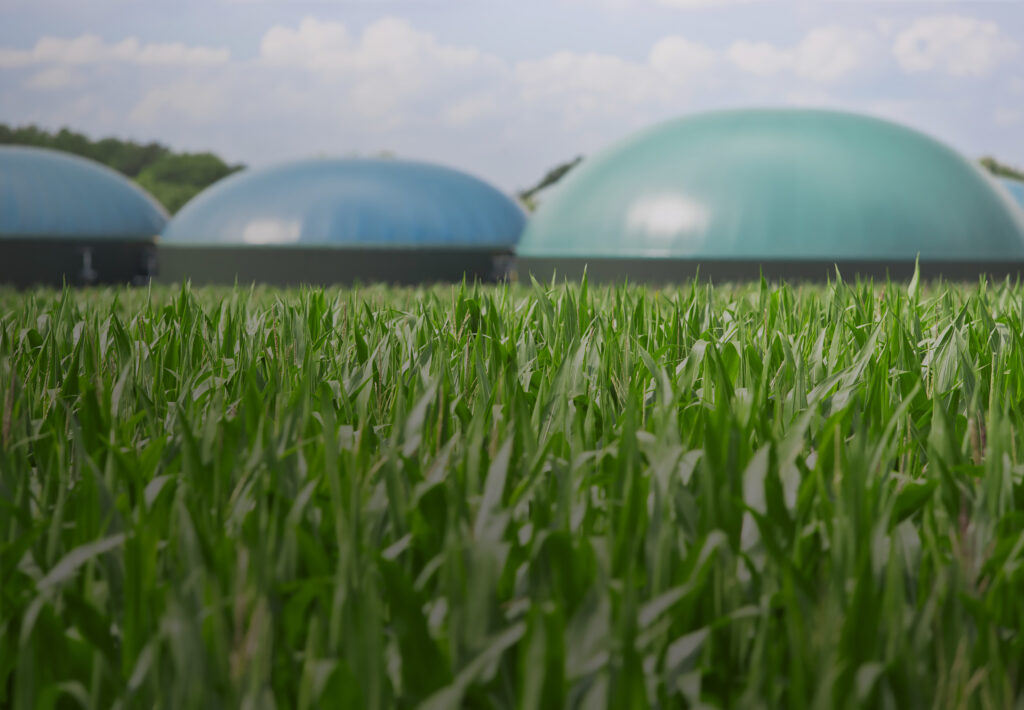The Significant Opportunities for the Expansion of Biogas in the United States
Solar power has been the face of the renewable energy industry in the United States for decades. Other than seeing the occasional array of wind turbines on the side of the highway, there isn’t a lot of public discussion around the different forms of renewable energy generation. A segment of this market that represents an increasing part of our renewable energy business here at AVANA is Biogas production facilities. These projects manufacture natural gas by processing livestock and food waste through specialized biological equipment. In this month’s update, we have provided some background information on this growing renewable energy technology.
What is Biogas?
Biogas is natural gas which is produced from the controlled decomposition of organic waste. The fuel is applicable to every traditional use, including heating and cooking fuel in your home, powering vehicles on the highway and fueling cleaner-burning electric power plants.
Biogas production facilities are commonly developed on livestock feedlots. Livestock waste is combined with other organic matter, such as food scraps and other natural waste products, in an “anaerobic digester”. The digester breaks down the organic material and releases a blend of gases, primarily clean-burning natural gas. The matter that remains after this process of “digestion” is a nutrient-rich liquid that is valuable as a fertilizer and soil amendment material.
The Biogas Industry
The U.S. Biogas industry is growing, but there is still tremendous potential for expansion. There are currently over 2,200 sites using various methods and technologies producing biogas across all 50 states. For comparison, Europe has over 10,000 operating digesters, and some communities are essentially fossil fuel-free because of them. There is a significant opportunity for the expansion of Biogas in the United States.
According to an assessment conducted by the USDA, EPA, and DOE, these new biogas systems could produce trillions of kilowatt-hours of electricity each year. The emissions equivalent of removing a staggering 115 million passenger vehicles from the road.
Beyond the significant environmental impacts, there are substantial ancillary benefits to the Biogas industry’s growth nationwide. There is capacity for an additional $45 billion in capital deployment for new Biogas systems, which would create approximately 374,000 short-term construction jobs and 25,000 permanent jobs. There are also significant economic benefits to converting waste products into fuel and high-quality fertilizer, improving the economies of rural communities nationwide.
Financing the Biogas Industry
The development and construction of Biogas production facilities require significant capital investment. Due to these high costs, debt capital is essential for the implementation of new biogas plants. Due to the complexity of the science and revenue streams for these projects, many traditional financial institutions have been unable to develop lending programs.
Here at AVANA, we saw traditional financial institutions’ inability to develop lending programs for Biogas facilities as an opportunity. We have dedicated substantial time and resources to understanding the complexities of biogas project development, economics, and financing strategies. Through this effort, we can effectively manage these projects’ credit risk and provide attractive risk-adjusted returns on these assets while supporting clean energy’s continued growth throughout the United States.
A recent AVANA Biogas project, Carbon Cycle Energy, enabled the conversion of an undesirable waste disposal system on a North Carolina Farm into a Biogas facility, providing power supplied to Duke Energy. This project improved the environmental impact of an outdated waste disposal mechanism and spurred the production of clean energy to be used by the state of North Carolina. AVANA’s $22 million conventional construction loan provided the necessary specialty construction financing required to complete this $62 million project.
The growth of the Biogas industry will be significant in the years to come. As public utilities, municipalities, and local communities become more aware of the short- and long-term benefits of Biogas technology to our environment, farming output, infrastructure, and economic development, we expect investment in these power-generation resources to grow. As always, please contact us directly if you have any questions about this product.
Sincerely,
 |
|
Sundip Patel
|
Michael Sheneman
|

